In June what has been known as Verizon Hall at the Kimmel Center for the Performing Arts since its opening in 2001 will be rededicated as Marian Anderson Hall to honor the great Philadelphia-born singer and civil rights pioneer.
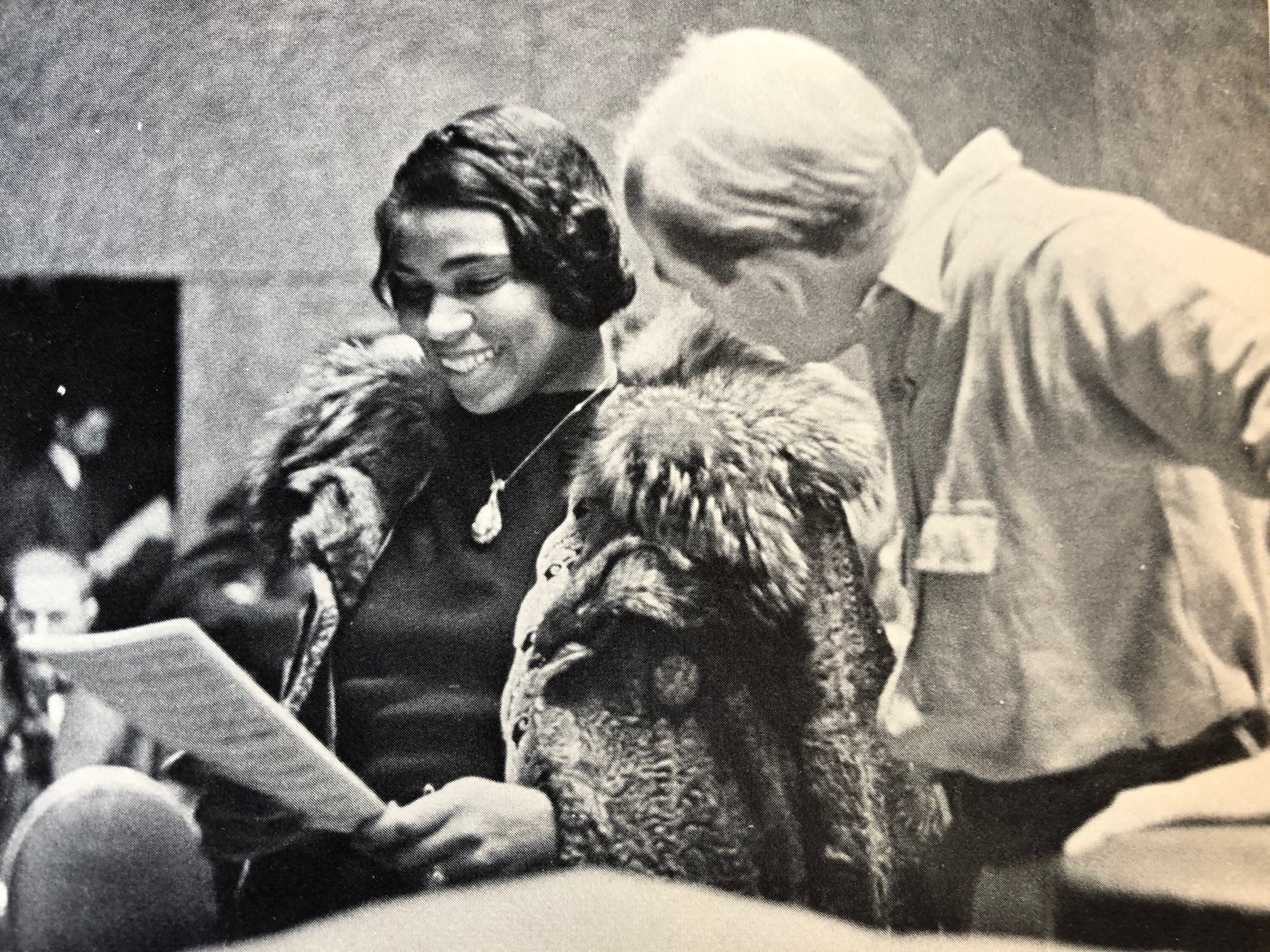
Marian Anderson with Music Director Eugene Ormandy at a Philadelphia Orchestra rehearsal in 1938. Photo: Adrian Siegel Collection/Philadelphia Orchestra Archives
Many associations come to mind concerning this extraordinary individual. For some, it begins with local pride in her being a Philadelphian. For many musicians, it is the magnificent quality of her contralto voice. Black performers are particularly grateful for the doors she opened, including being the first Black artist to sing at the Metropolitan Opera.
And for nearly everyone there is her dignified place as a powerful symbol of racial justice, exemplified by two performances at the Lincoln Memorial in the nation’s capital. After the Daughters of the American Revolution (DAR) did not permit her to perform at Constitution Hall in 1939 because of her race, First Lady Eleanor Roosevelt resigned from the organization and, with a group of other prominent Washington figures, invited Anderson to sing at the Lincoln Memorial. The Easter Sunday event attracted a crowd of some 75,000, including Supreme Court justices, Cabinet officials, and Congressional leaders. The national NBC broadcast and newsreels of the concert reached millions more; a 10-year-old Martin Luther King, Jr., is reported to have heard it. Accompanied by the Finnish pianist Kosti Vehanen, Anderson started by singing “America,” with the familiar opening words, “My country, ’tis of Thee, Sweet land of liberty,” taking on special import. And, significantly, she changed the words from “Of thee I sing” to “To thee we sing.”
Anderson returned to the Lincoln Memorial in August 1963 and sang “He’s Got the Whole World in His Hands” during the concluding ceremony of the March on Washington for Jobs and Freedom, the occasion when Dr. King gave his celebrated “I Have a Dream” speech. Over the decades Anderson performed at the White House, became the first Black woman to participate in an inauguration (Eisenhower’s in 1957; she also participated in John F. Kennedy’s in 1961), and received the Presidential Medal of Freedom from Lyndon B. Johnson in 1963.
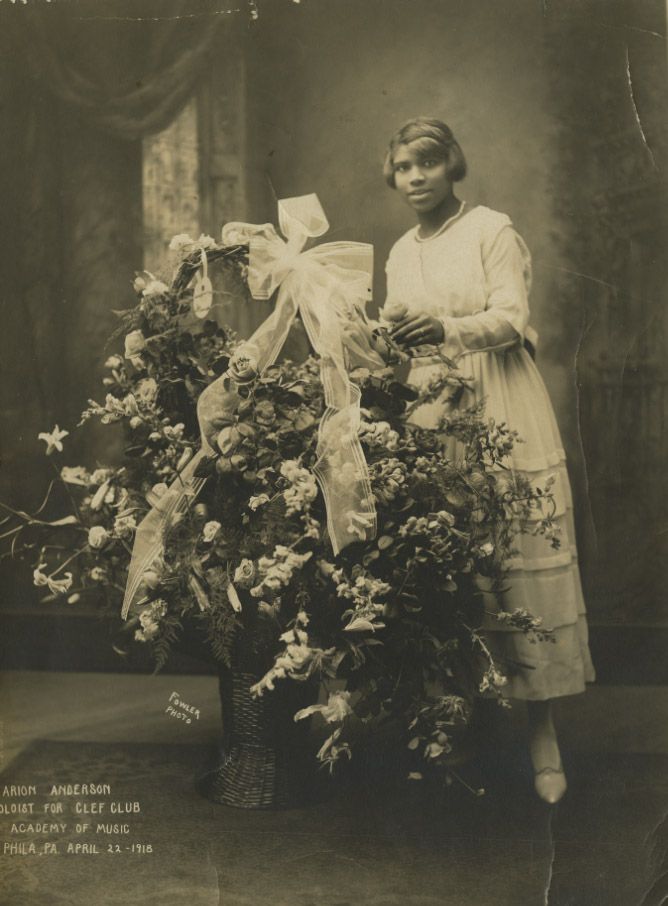
A 21-year-old Marian Anderson, around the time of her first appearance at Philadelphia’s Academy of Music, with the New York Clef Club Syncopated Orchestra.
Anderson’s life story is intimately connected to her hometown. (A 1957 See It Now episode narrated by Edward R. Murrow is titled “The Lady from Philadelphia.”) All four of Anderson’s grandparents had been enslaved and her parents moved to South Philadelphia, where she was born in 1897, the eldest of three daughters.
The most familiar stories about musical prodigies concern composers, like Mozart, and instrumentalists, in particular pianists and violinists who dazzle with their youthful brilliance. But singers tend to have a different trajectory because their instrument is their body, which changes and needs time to mature. In this respect, Anderson’s story is unusual. The singular gifts of “the baby contralto” were recognized and fostered early. At age six she started singing in the junior choir of the Union Baptist Church and later in the People’s Chorus. Community and church support helped to fund her music studies, assistance that became more urgent after her father died when she was 12 and the family struggled financially.
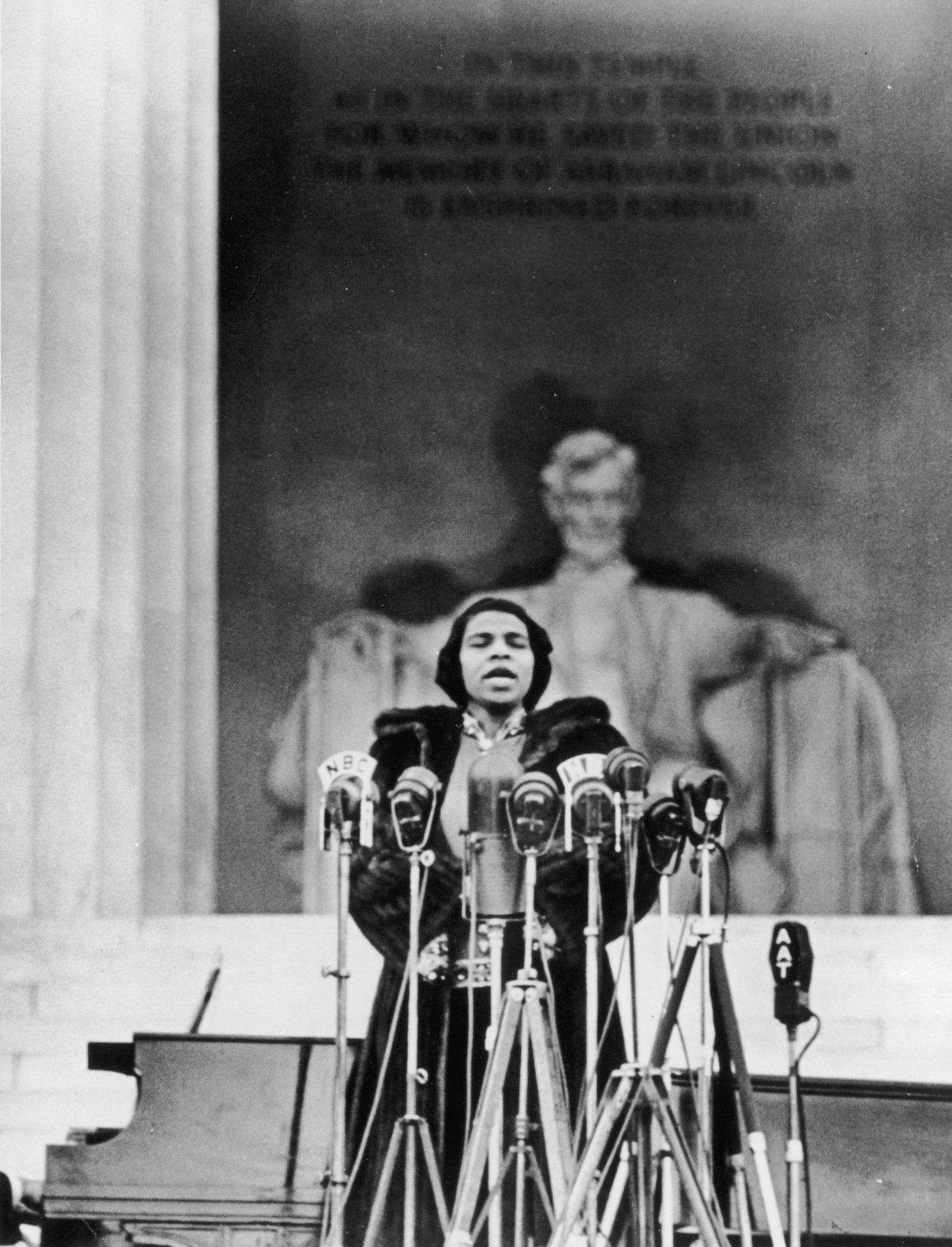
Marian Anderson singing at the Lincoln Memorial on Easter Sunday 1939.
Because of her race, Anderson was refused admittance to the Philadelphia Music Academy on Pine Street but studied privately with Giuseppe Boghetti and others before entering the Philadelphia Music Settlement School. The prominent Black tenor Roland Hayes became a mentor as well as a model; his programming regularly mixed spirituals with European classical repertory. Anderson began her professional activities as a teenager, gave a recital at Town Hall in New York City in 1924, and the next year won a competition that led to an appearance with the New York Philharmonic.
Despite early successes, she felt the need for more serious musical training, and in 1927 at the age of 30, headed to Europe, where racial obstacles were somewhat less of a liability. She went first to London, and three years later received a grant from the Rosenwald Fund to study in Berlin, where she learned German. She spent the next few years mostly in Scandinavia and became friends with Jean Sibelius, who revised some of his songs for her. Anderson’s career blossomed abroad.
Her American success took off when the powerful impresario Sol Hurok became her manager. The New York Times praised a 1935 Town Hall recital: “Let it be said at the outset: Marian Anderson has returned to her native land one of the greatest singers of our time.” That same year she sang for the first time at the White House, initiating a close friendship with Eleanor Roosevelt. Under Hurok’s shrewd management, her many concerts, recordings, and TV appearances made her wealthy despite being unable to perform in the Jim Crow South.
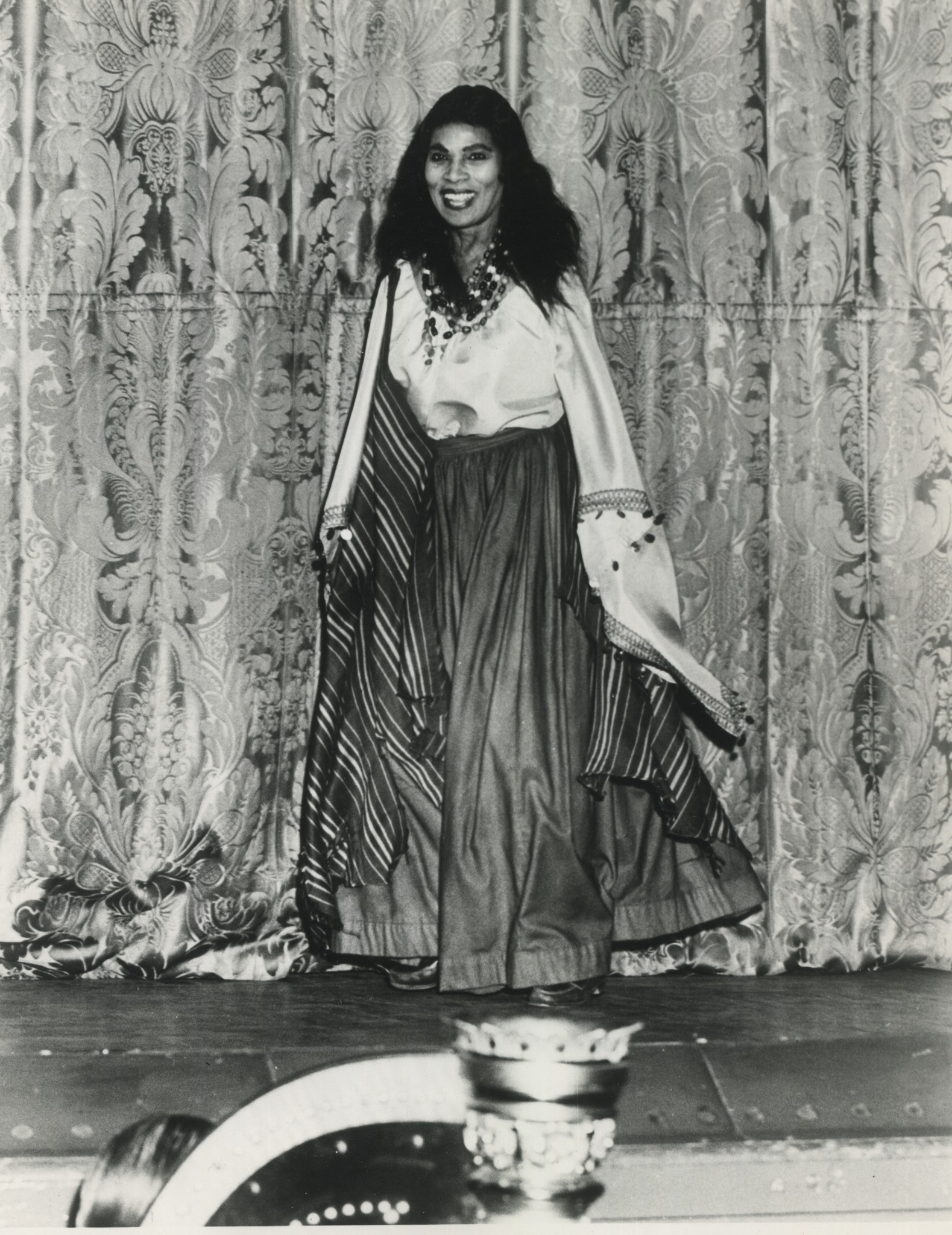
Marian Anderson taking a solo bow after making her Metropolitan Opera debut in 1955.
Over time, with ever greater recognition, unusually broad international fame, and many awards and honors, Anderson’s place in history moved well beyond the musical to a larger importance as a pioneer for civil rights. She was often drawn in by racist circumstances that sometimes backfired, such as the DAR incident or when the Nassau Inn in Princeton, New Jersey, refused to give her a room and Albert Einstein insisted she stay in his home, leading to a long friendship.
In one respect, the musical public was cheated: There were no chances for Anderson to pursue opera, although she performed and recorded isolated arias and occasionally received offers from European houses. The result is the paradox that, while Anderson was the first Black singer to perform at the Metropolitan Opera—Ulrica in Verdi’s A Masked Ball—after eight performances she did no more. She was 57 at the time, her first and final appearance on the operatic stage paving the way for so many great Black singers to come.
Fortunately, we have more than reviews, anecdotes, and fond memories of those lucky enough to hear her. Recordings—acoustic documentation starting at a time when the technology was in its infancy—allow us still to experience her art over more than four decades. Anderson made her debut recording in 1923 at age 16 for the Victor Talking Machine Corporation (later RCA Victor). It was of a work she would record several more times: Harry T. Burleigh’s arrangement of “Deep River,” the first recording of a spiritual released by a major company. While some critics questioned her interpretive abilities at the time, there is no doubt that we can already hear what so excited everyone about the extraordinary quality and range of her voice. A lavish 15-CD set of her complete recordings was released by Sony Classical in 2021.
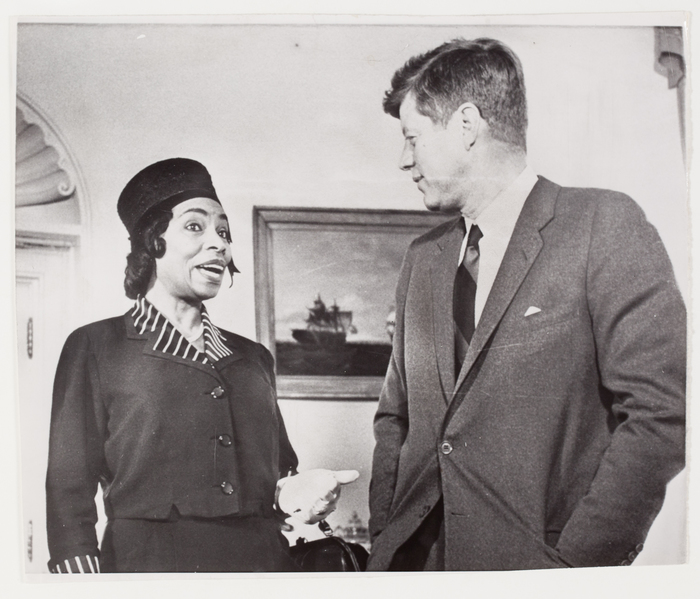
Marian Anderson with President John F. Kennedy in the Oval Office in 1962.
The local thread of Anderson’s career of course includes The Philadelphia Orchestra. Over 20 years, between 1937 and 1957, she sang 12 times with the Philadelphians. Their first collaboration was on an RCA Magic Key radio broadcast, where she performed “O don fatale” from Verdi’s Don Carlo. In 1939 she recorded one of her signature pieces, Brahms’s glorious Alto Rhapsody, conducted by Eugene Ormandy. Her performances with the Orchestra reflect various sides of her repertory: arias from operas and oratorios, German songs (including Mahler’s Kindertotenlieder), and spirituals. After her retirement from singing in 1965 she joined the Orchestra to narrate Aaron Copland’s A Lincoln Portrait several times in Saratoga and at the Robin Hood Dell, the last time in 1976, when she was nearly 80, with the composer conducting.
Anderson died in 1993 at age 96 but the relationship with her hometown continues in several ways. She is buried at Eden Cemetery in Collingdale and her papers are housed at the University of Pennsylvania. The naming of Marian Anderson Hall offers yet another opportunity to honor her vast achievements and legacy.
Christopher H. Gibbs is James H. Ottaway Jr. Professor of Music at Bard College and has been the program annotator for The Philadelphia Orchestra since 2000. He is the author of books on Schubert and Liszt, and the co-author, with Richard Taruskin, of The Oxford History of Western Music, College Edition.